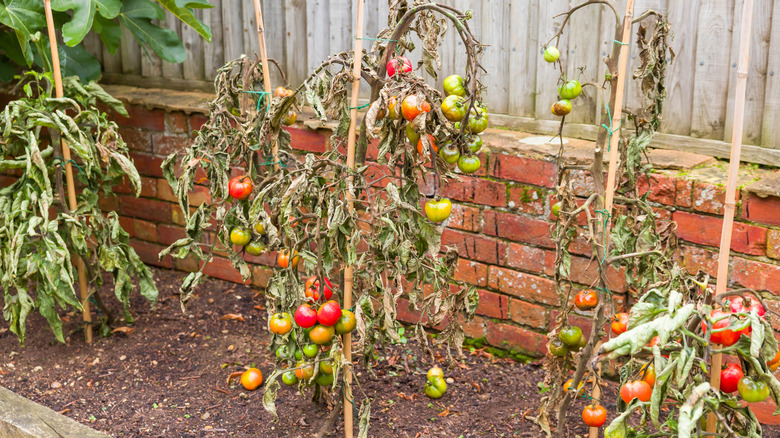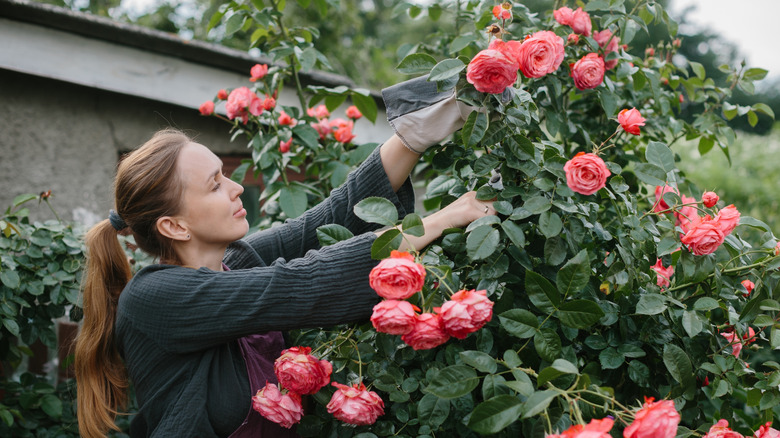Is Your Plant Suffering From Smoke Exposure? Here's What To Do About It
Wildfires are becoming more frequent in many regions across North America, and the smoke generated can drift far beyond the flames. Even if your property is physically safe from fire, the lingering haze may block the sunlight and impact your plants. Smoke exposure is not just a nuisance; it can stress and damage your greenery. Indoor potted plants, outdoor gardens, and even balcony plants can accumulate tiny particles from smoke that settle on leaves, stems, and soil. Recognizing the risk is crucial in shielding your plants. While there are ways to protect your home from wildfires, you should also be mindful of how they may affect your outdoor space.
Smoke contains fine particles and chemicals that can interfere with normal plant functions. These microscopic particles can block stomata, the tiny pores on leaves that are responsible for regulating water and nutrient intake. When these pores are clogged, photosynthesis can slow, and plants can become more susceptible to disease and pests. Sensitive species like orchids, ferns, and succulents are among the first to show symptoms. Their leaves may develop gray or ashy coatings. They may also curl, droop, or fall off entirely while buds may fail to open. Over time, the effects from smoke on the plants can build up, leading to slowed growth, stunted foliage, and reduced resilience. But with care, your plants should recover from exposure. You just have to know the proper steps to follow.
Typical signs of smoke exposure in plants
The most obvious sign of smoke exposure on your plant will appear on their leaves. Smooth surfaces may be coated in a thin layer of soot or gray dust, while textured plants trap particles in tiny crevices. Curling or wilting leaves are common, especially in species sensitive to rapid change. Discoloration ranging from dull green to yellow or brown are also indicators that a plant is stressed. Leaf drop is another warning sign, as the plant sacrifices damaged foliage to conserve energy. These symptoms are the easiest to spot and early recognition allows you to take prompt action to help your plants recover.
Less obvious symptoms can be easy to miss but are equally important. A smoky odor lingering on leaves or in soil suggests that particles are affecting root function and nutrient absorption. Brittle stems, subtle changes in leaf texture, and irregular discoloration patterns indicate cumulative stress. Even when damage seems minor, smoke exposure can slow a plant's metabolism, which can make them more susceptible to pests, disease, or stressors like drought. Not all smoke exposure is related to wildfires. If your plants are positioned near a fireplace, consistent candle smoke, or other open sources of fire, they may begin to experience symptoms if they are not properly treated.
How to care for a plant that has been exposed to smoke
Cleaning is the first step to help your plants recover. Indoor plants can be gently wiped with a damp cloth to remove smoke particles, while delicate foliage can be lightly rinsed under lukewarm water. Ensure that the water pressure isn't too high when cleaning, as it can tear leaves and further damage greenery. Outdoor plants will benefit from a gentle hose-down, taking care not to damage leaves or dislodge soil. Harsh chemical cleaners should be avoided, as they can have a negative reaction with substances that may be in the ash. Improving air circulation is also important for indoor plants. Use an air purifier to combat wildfire smoke or relocate the plant to a well-ventilated area. By removing smoke particles, photosynthesis will resume and growth will be supported. Cleaning your plant is crucial to ensure there is no lingering soot or ash. If the wildfire is ongoing, keep an eye on your plants and maintain a regular cleaning schedule if you are safe.
Long-term care focuses on strengthening roots, pruning damaged leaves, and preventing exposure. Topping soil or a light rinsing should remove lingering particles that can affect your plant's nutrient intake. Regular watering encourages recovery, but do not overwater. You could also prune to redirect energy toward new growth. Acting quickly ensures that your greenery has plenty of time to bounce back from smoke exposure. Fire-resistant plants can also be placed around your yard to help prevent the spread, but they may still be impacted by smoke exposure.


